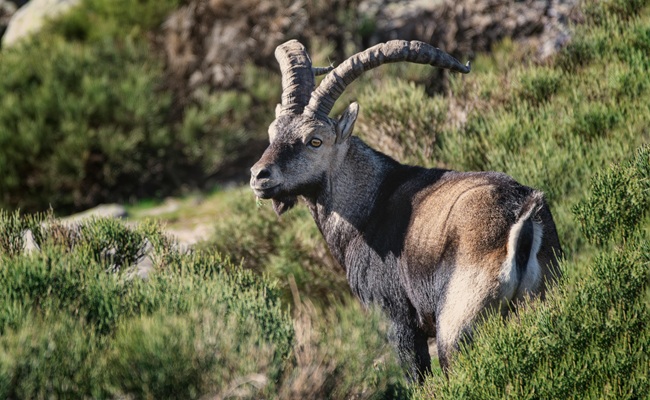
Ibexes are fascinating creatures. Learn more about them and enjoy these fun and interesting facts about them:
Impressive Horns: One of the most striking features of the ibex is its long, curved horns. Both males and females have horns, but those of the males are usually larger and more prominent. These horns can grow up to 40 inches in length.
Rock-Climbing Experts: Ibexes are exceptional climbers and are known to scale steep and rocky terrain with ease. They can navigate cliffs and narrow ledges with incredible agility, making them well-suited for their mountainous habitats.
Social Behavior: Ibexes are social animals and often live in small groups. These groups consist of females and their young, while males tend to be more solitary outside of the mating season. During the breeding season, dominant males compete for access to females.
Vocal Communication: Ibexes communicate with each other through a variety of vocalizations, including grunts, snorts, and bleats. These vocalizations play a role in establishing dominance and maintaining group cohesion.
Adaptability to High Altitudes: Ibexes are well-adapted to high-altitude environments. They have specialized hooves that provide an excellent grip on rocky surfaces, allowing them to forage for food in places where other animals might struggle to access.
Diverse Diet: Ibexes are herbivores and graze on a wide range of vegetation found in their mountain habitats. Their diet includes grasses, herbs, shrubs, and even lichens. This diverse diet helps them survive in the challenging alpine environment.
Seasonal Migration: Some ibex populations undertake seasonal migrations between lower and higher altitudes. They move to lower elevations in the winter to find food, returning to higher elevations in the summer when the snow has melted.
Conservation Success Stories: Several ibex species, such as the Alpine ibex, have made remarkable recoveries thanks to conservation efforts. Once on the brink of extinction, populations have rebounded due to habitat protection and anti-poaching measures.
Protected Status: Many countries have recognized the importance of conserving ibex populations and have designated national parks and protected areas where these animals can thrive without significant human disturbance.
Cultural Significance: Ibexes have often been featured in the folklore, mythology, and art of regions where they are native. They symbolize strength, resilience, and the rugged beauty of mountain landscapes.
These fun facts about ibexes highlight their unique characteristics and the important role they play in the ecosystems of high-altitude regions. They continue to captivate the imaginations of people around the world with their striking appearance and remarkable adaptations.
Related Articles & Free Email Newsletter Sign Up
Desert Bighorn Sheep are Masters of Arid Landscapes
Embracing the Enchantment: Krefft’s Glider as a Unique Pet Companion




Comment here